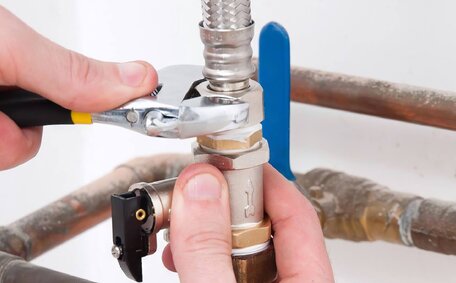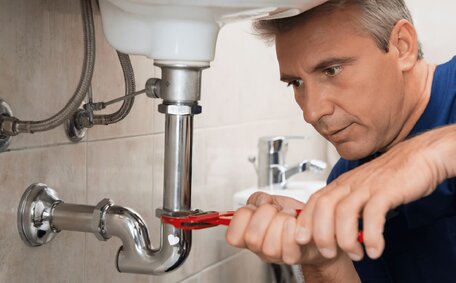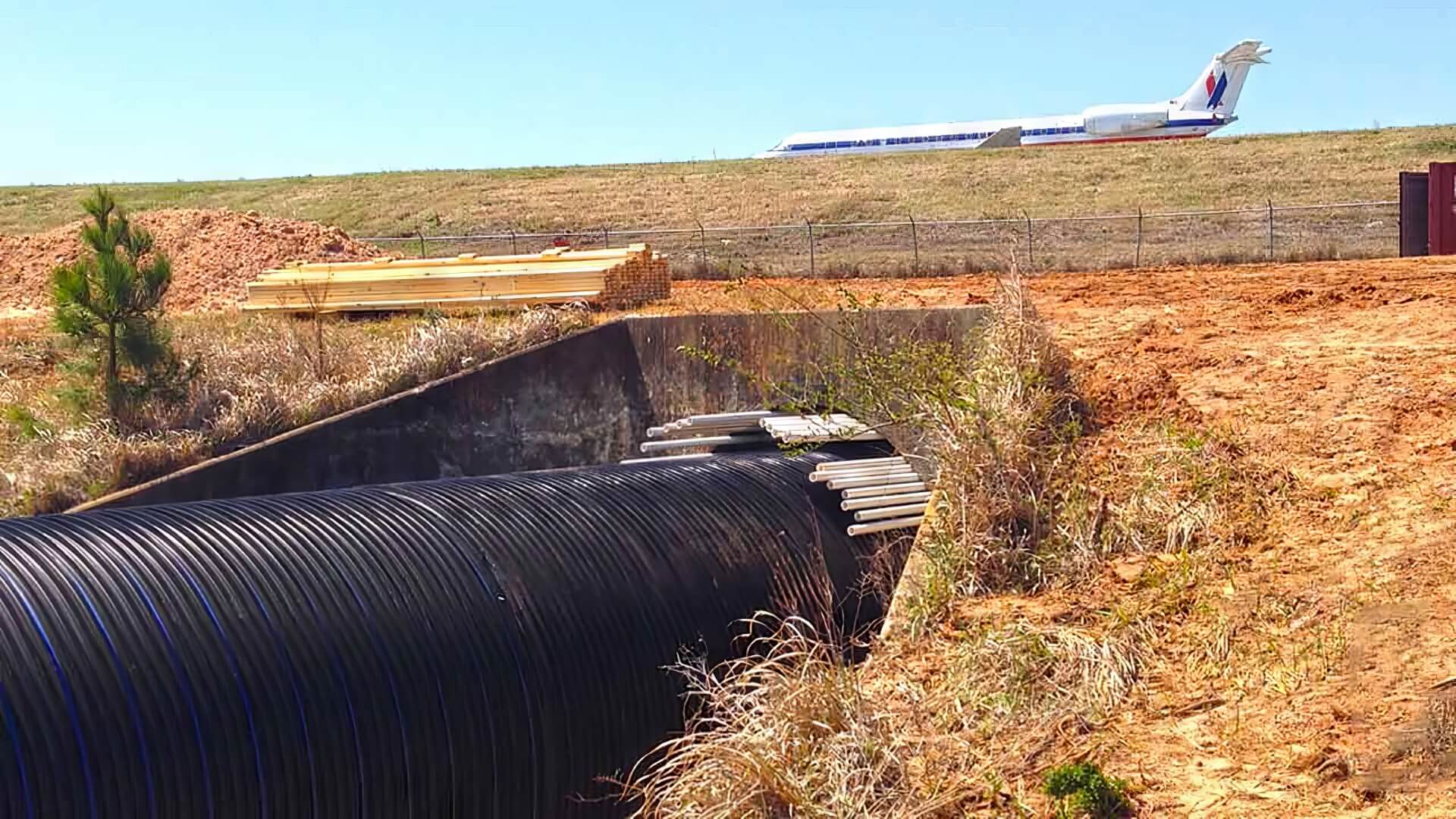
Is a broken tap an emergency?
A broken tap that is causing flooding, water wastage or damage should be treated as a plumbing emergency. Call our 24/7 emergency plumbers for prompt repairs to burst pipes, damaged taps, water leaks and more.
Read MorePipe relining is a trenchless rehabilitation method that fixes pipes without the need for excavation. This process involves inserting a resin-impregnated liner into damaged pipes and curing it to form a smooth new pipe within the existing structure.
There are two main types of pipe relining:
The benefits of pipe relining, demonstrating its appeal as an alternative method, include:
Overall, pipe relining offers an environmentally friendly approach to sewer repair, more sustainable than traditional pipe replacement methods.
Pipe relining boasts numerous environmental advantages, including enhanced durability and reduced environmental impact due to less need for future repairs:
As a non-invasive technique, pipe relining preserves landscapes, gardens and ecosystems by eliminating excavation. Trees, plants, and soil structures can remain undamaged, thus your gardens and natural environments are preserved.
The materials and resins used in relining have a lower embodied energy compared to those in traditional pipe manufacturing, reducing environmental impact.
Pipe relining repurposes existing pipes, thus reducing the amount of waste consigned to landfills. Moreover, the cured resin materials within the pipes remain undisturbed underground post-insertion.
Our methods result in a lighter environmental footprint, showcasing the sustainability of the approach.
The new lining, smooth and jointless, prevents future invasions by tree roots, thus circumventing the need to remove or poison trees and plants around pipes.
So in summary, pipe relining ticks all the boxes for an eco-friendly and sustainable plumbing solution with minimal impact on the surrounding environment.
One of the prominent environmental advantages trenchless pipe relining delivers, is its focus on replacing damaged areas which cause blocked drains with minimal disturbance to landscaping and property, unlike traditional pipe replacement techniques.
Pipe relining protects gardens, trees, pathways, and other landscape features by avoiding the need for digging.
Likewise, With pipe relining, the structural integrity of homes and buildings is preserved, offering robust pipe repairs without compromise. Foundations, walls, driveways and other hardscapes are left fully intact.
The absence of heavy machinery and invasive digging methods surpasses traditional techniques, avoiding risks such as pipe damage, like cracked grounds or subsidence. Overall, pipe relining enables non-invasive repairs, which provide homeowners with significant peace mind during emergency plumbing scenarios, ensuring minimal impact on the surrounding environment.
By not disturbing native vegetation or habitats around a property, the local ecosystem remains protected. Pipe relining therefore delivers essential plumbing repairs in the most sustainable and environmentally responsible manner possible.
By avoiding the need to dig trenches, pipe relining can eliminate carbon-intensive processes and ensure the materials can be used more sustainably. The relining materials themselves also have a much lower embodied carbon footprint compared to manufacturing entirely new pipes.
One UK study by the BPF Pipe Group found that pipe relining reduced CO2 emissions by 61% compared to typical pipe replacement. Factors leading to these savings included:
Pipe relining’s environmental benefits include offering a robust, long-lasting fix, minimizing the need for repeated repairs.
This is a similar lifespan to new pipe installation. The seamless epoxy or HDPE pipe lining bonds securely within the host pipe to prevent leaks, cracking, roots or buildup from reoccurring.
Trenchless relining provides a more enduring solution compared to traditional pipe replacement or spot repairs, which may fail within 5-10 years. This indicates that, without pipe relining, excavation work, property damage, raw material use, and waste production would continue to occur the next time repairs are needed.
The substantial lifespan of pipe relining sidesteps any negative impact on the environment. It is a one-time, whole-of-life solution. Over the next 50 years, relined pipes effectively eliminate the emissions, resource consumption, landfill waste and ecosystem disruption that would accumulate from multiple repairs if new pipe replacement was undertaken instead.
So for homeowners seeking to extend the life of their plumbing systems sustainably, pipe relining is the eco-friendliest repair or replacement choice.
When evaluating sustainability and environmental consideration, the extended durability offered by repairing replacing pipes with pipe relining clearly excels beyond full pipe replacement.
Relining pipe dramatically reduces carbon emissions by 61% compared to pipe replacement, owing to less truck movements, transported materials and concrete work.
Pipe relining can lead other short-term fixes of spot repairs or dig pipe replacements which typically fail again within 10 years, by offering a 50-year solution.
This is essentially what pipe relining mitigates—avoiding cumulative emissions and waste from multiple future repairs that replacement would necessitate.
Pipe relining not only boasts a longer lifespan but also generally costs 30-50% less than full pipe replacement.
When factoring in sustainability, Given its resistance to weather conditions and environmental factors, pipe relining is undeniably the superior, eco-friendly choice compared to replacement methods.
The effective way repairing damaged pipes is exemplified by pipe relining, tailored to address the specific damage or unique configurations encountered. Contrasting full replacement that employs fixed dimensions, relining can be customized to suit varying pipe shapes and sizes.
The felt or epoxy resin liners we can use are imbued with the necessary solution on-site and then threaded through the entire length of the pipe necessitating repair. By using CCTV technology, we can determine the condition pipes are in internally and ensure the custom liner fits snugly against the pipe walls, sealing off any cracks and gaps. The pipe lining process then completes as the lining cures to form a smooth, jointless inner pipe.
This custom-fit method prevents gaps and conserves materials by only relining the specific length and diameter of piping that requires repair. Compared with traditional replacement methods that see offcuts and plastic wastage, the resources and liners used during relining are highly efficient.
Deformed or collapsed areas of pipe are no match for the flexible lining method.
We understand homeowners may have some concerns when considering pipe relining instead of traditional replacement methods. Here we address some common questions about the safety, effectiveness and eco-credentials of pipe relining:
Yes, the epoxy resins used to saturate the pipe liners are non-toxic once cured and completely safe for potable water contact. The resins are certified under NSF/ANSI Standard 61 for materials used in drinking water systems.
Pipe relining is highly effective, ensuring that your pipes remain leak-free and intact for over 50 years. Unlike other repair methods, relining fully seals and smoothens the interior pipe surface for the long haul.
The trenchless nature of pipe relining, requiring no digging, guarantees minimal environmental and property impact. The flexible liner is fed through the damaged pipes without excavating your land, beginning from a subtle access point. Work can usually be completed in one day too.
Absolutely! Pipe relining avoids landfill waste, preserves landscaping, uses less energy and resources than replacement, and reduces carbon emissions by 61%. The materials, resin and lack of digging make it a very green plumbing solution.
So in summary, pipe relining is a durable, effective and sustainable repair method for your pipes; find out the full range on our website. Please contact us or read more about the process on our website to address any other concerns you may have.
[Business Name] has established itself as a leader in eco-friendly plumbing solutions and your trusted authority for pipe relining within the [Geographical Location] area. With over 10 years’ experience, our team has shown exceptional dedication to sustainable plumbing solutions that cater to a variety of materials, including cast iron pipes, thus reducing environmental impact.
Our licensed plumbers are proficient in both relining and professional drain cleaning, having reinstated thousands of metres of pipe across diverse residential and commercial settings. We stay ahead of evolving industry standards and best practises to deliver reliable results that stand the test of time.
Our expertise in sewer line relining is further supported, as experts in minimally invasive trenchless repairs, by cutting-edge pipe relining technologies for sewer pipe issues and sophisticated inspection tools to evaluate your pipes’ internal condition. This empowers your local plumbing specialists to offer no dig pipe relining solutions for sewer pipes, preserving yards and floors from disruption.
We use only non-toxic, durable epoxy resins for pipe relining, which are safe for drinking water contact and provide long-lasting performance without the need for harmful chemicals or extensive excavation. Combined with our no-dig process that preserves landscaping, pipe relining dramatically reduces the carbon footprint compared to replacement.
For an affordable, long-lasting pipe repair solution, contact us on [Business Phone] or email us to book your inspection and no-obligation quote.
A broken tap that is causing flooding, water wastage or damage should be treated as a plumbing emergency. Call our 24/7 emergency plumbers for prompt repairs to burst pipes, damaged taps, water leaks and more.
Read MoreBurst pipes, blocked toilets, sewer backups and lack of hot water are among the most common residential plumbing emergencies that require urgent attention from a professional plumber. If you experience any of these issues, call our 24/7 North Ryde emergency plumbers right away for fast, reliable service.
Read MoreTo determine if a relined pipe meets safety standards, professionals use equipment like CCTV cameras and hydrostatic pressure tests. Relining pipes is an affordable, non-invasive alternative to full replacement that can extend pipe lifespan 50+ years if done properly.
Read MoreNorth Ryde, 2113 NSW
We will call back as soon as possible.




